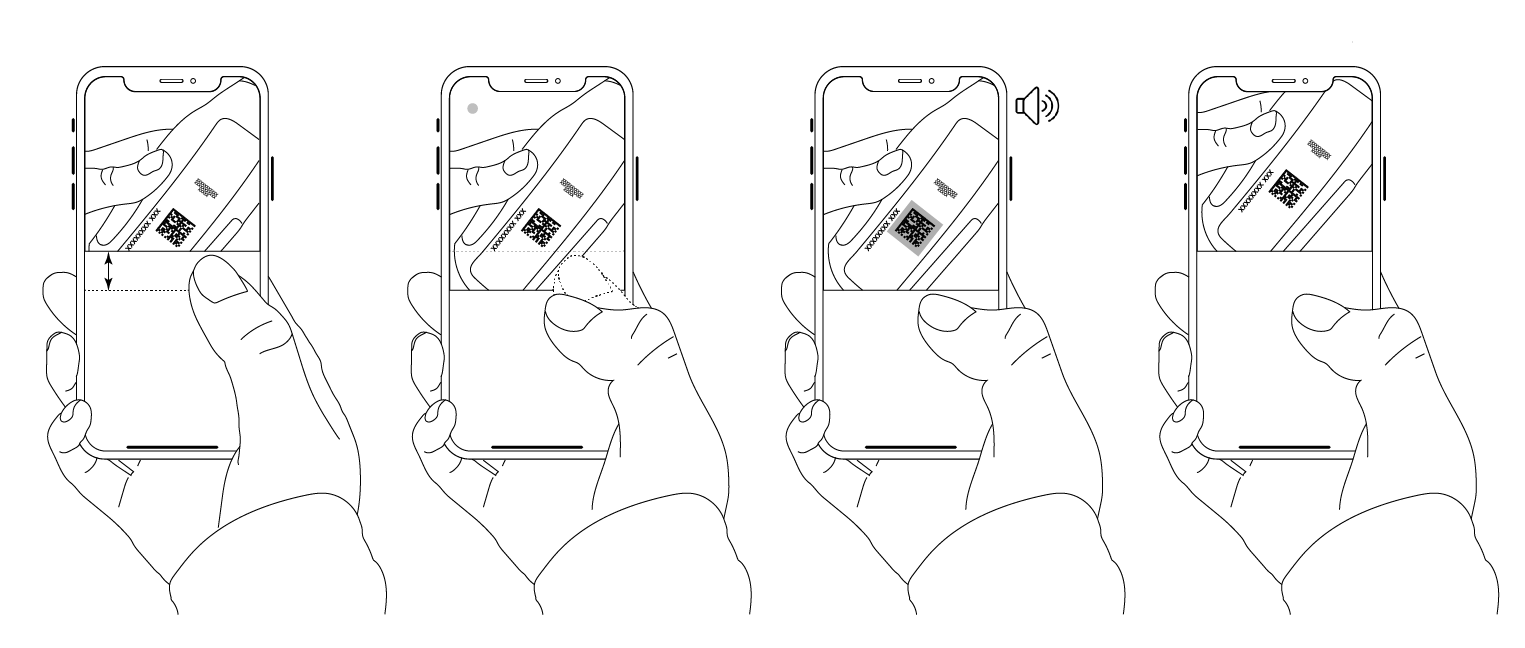Following TSD, smartphones entered the mobile device market, which significantly surpassed existing terminals, both in hardware and in the functionality of operating systems. Only relatively recently, data collection terminals received the Android OS, but their cost is completely incomparable with the cost of smartphones.
It would seem that smartphones should have been displacing terminals for a long time, but a few elementary details still interfere with this.
The main advantage of TSD is the speed of work, achieved due to ergonomics, namely the presence of a physical button, conveniently located under the thumb. It allows you to work for a long time terminal without a feeling of discomfort in the wrist.

Unlike data collection terminals, smartphones do not have a convenient orange button under the thumb, but there is a way to replace it - this is a pull-to-scan gesture.

The pull-to-scan gesture scanning algorithm can be represented as follows:
- The screen area is divided into 2 parts (the top shows the video stream from the camera, the bottom information). At the same time, barcode recognition does not occur in standby mode.
- To simulate working with a scanner or data collection terminal, the smartphone’s camera is statically focused at a distance of 10 - 15 cm, which greatly speeds up recognition.
- Barcode recognition in the camera's field of view starts after the user pulls the screen down. In this case, it does not matter which area of the screen he originally touched. To achieve maximum ergonomics, a red dot appears on the screen, and the display area of the video stream increases.
- While the user holds the screen down, a barcode search is in progress. If a barcode is detected, it is highlighted in the video stream, a sound signal sounds, and the size of the video stream area returns to the original one.
- To scan the next code, the user needs to touch the screen again and pull it down.
Benefits of using the pull-to-scan gesture
- The absence of false positives inherent in the “continuous scanning” technology. You do not need to keep track of where the smartphone’s camera is pointing, because recognition is only activated when there is a gesture.
- No need to focus your eyes on the phone screen to combine a specific area with a barcode. You simply point the camera towards the barcode while holding the smartphone at a distance of 10 - 15 cm from it.
- High speed compared to periodically opening the scan window. The method with periodic window opening is generally suitable only for very small amounts of barcodes, although it is found in most smartphone-based solutions.
- The presence of tactile feedback, as in the case with the button of the data collection terminal. You feel when the smartphone is in scan mode, and when not.
The introduction of technology in the organization of wholesale trade in branded alcoholic beverages has proved the possibility of using iPhone SE smartphones instead of data collection terminals without loss in scan volumes per unit of time and ease of use (ergonomics). At the same time, smartphones turned out to be more maintainable and more universal in operation, since they allowed to use many additional tools on one device.